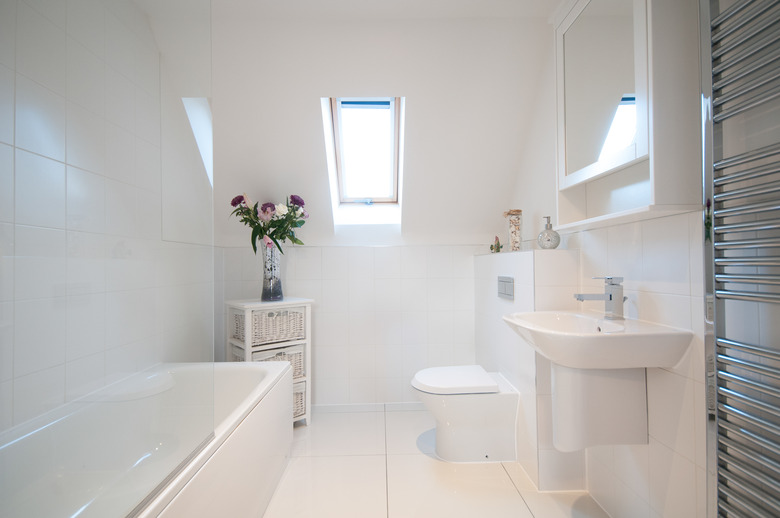Dehumidifying A Bathroom Without A Fan: A DIY Guide
We may receive a commission on purchases made from links.
Exhaust fans are lifesavers when it comes to dehumidifying a bathroom, but sometimes older homes and apartments with small bathrooms don't have them. If you have a poorly ventilated bathroom or a bathroom without an exhaust fan, there are still ways to dehumidify the room. Although a warm, steamy bathroom may feel nice, you don't want to risk getting mold or mildew.
Bathroom Mold and Mildew Problems
Bathroom Mold and Mildew Problems
Mold looks unsightly and can give your bathroom a weird odor, but it can also cause a myriad of health problems. According to the CDC, household mold can cause long-lasting or even chronic health problems in people exposed to it. It can specifically harm infants and small children, older people, people with preexisting respiratory disorders, people with disorders affecting the immune system, people taking medications, or those undergoing medical procedures that can suppress the immune system.
Although mold and mildew can harm people with preexisting conditions, it can also affect healthy individuals. Possible mold health issues include allergic reactions; skin rash or hives; coughing; sneezing; wheezing; shortness of breath; runny or stuffy nose; red, itchy, irritated eyes; sore throat; sinusitis; bronchitis; pneumonia; asthma attacks; fever; headaches and migraines; swollen lymph nodes; and muscle aches.
Unsightliness and health issues aside, mold can also cause severe damage to one's home. It can eat away at wood and damage your walls, ceilings, and floors. That's why you must dehumidify your bathroom, even if you don't have an exhaust fan.
Different Ways to Dehumidify a Bathroom
Different Ways to Dehumidify a Bathroom
Bathrooms usually are moist and full of warm air, and that's the type of environment where mold thrives. If you don't have a bathroom fan, there are a couple of ways you can encourage dry air and dehumidify the room.
The first way would be to purchase a portable dehumidifier for your bathroom. But before you make the purchase, consider how big the area is and how damp your bathroom gets. Small bathrooms are very common, and the moist air that builds up inside them can be a problem. The best way to combat this is to purchase a compact dehumidifier, like the ProBreeze Electric Mini Dehumidifier or Pure Enrichment PureDry Mini Dehumidifier. If you have a larger space, consider installing a whole-house dehumidifier that hooks up to your existing HVAC system.
Here are some other ways to dehumidify your bathroom without a fan:
- Open your bathroom windows while you shower
- Take cooler showers
- Leave the bathroom door open while you shower to improve airflow
- Use a dry towel or squeegee to wipe away excess moisture after a shower
Taking shorter and cooler showers will lower the humidity level in your bathroom because cool water reduce s heat and condensation — the exact opposite happens when you take a hot shower. Either way, get into the habit of wiping down the moisture from your bathroom as soon as you get out of the shower to minimize dampness. You'll remove moisture buildup in your bathroom while also preventing any pesky water spots from forming.
How to Prevent Mold Growth in Your Bathroom
How to Prevent Mold Growth in Your Bathroom
If you can eventually install an exhaust fan, that would save you a lot of trouble in the long run. Although bathroom dehumidifiers can help, sometimes they're not enough if you have a poorly ventilated space or one that is prone to mold. Besides buying a small dehumidifier, opening your windows, and taking cold showers, make sure you don't leave wet clothes or towels sitting in your bathroom for long periods.
